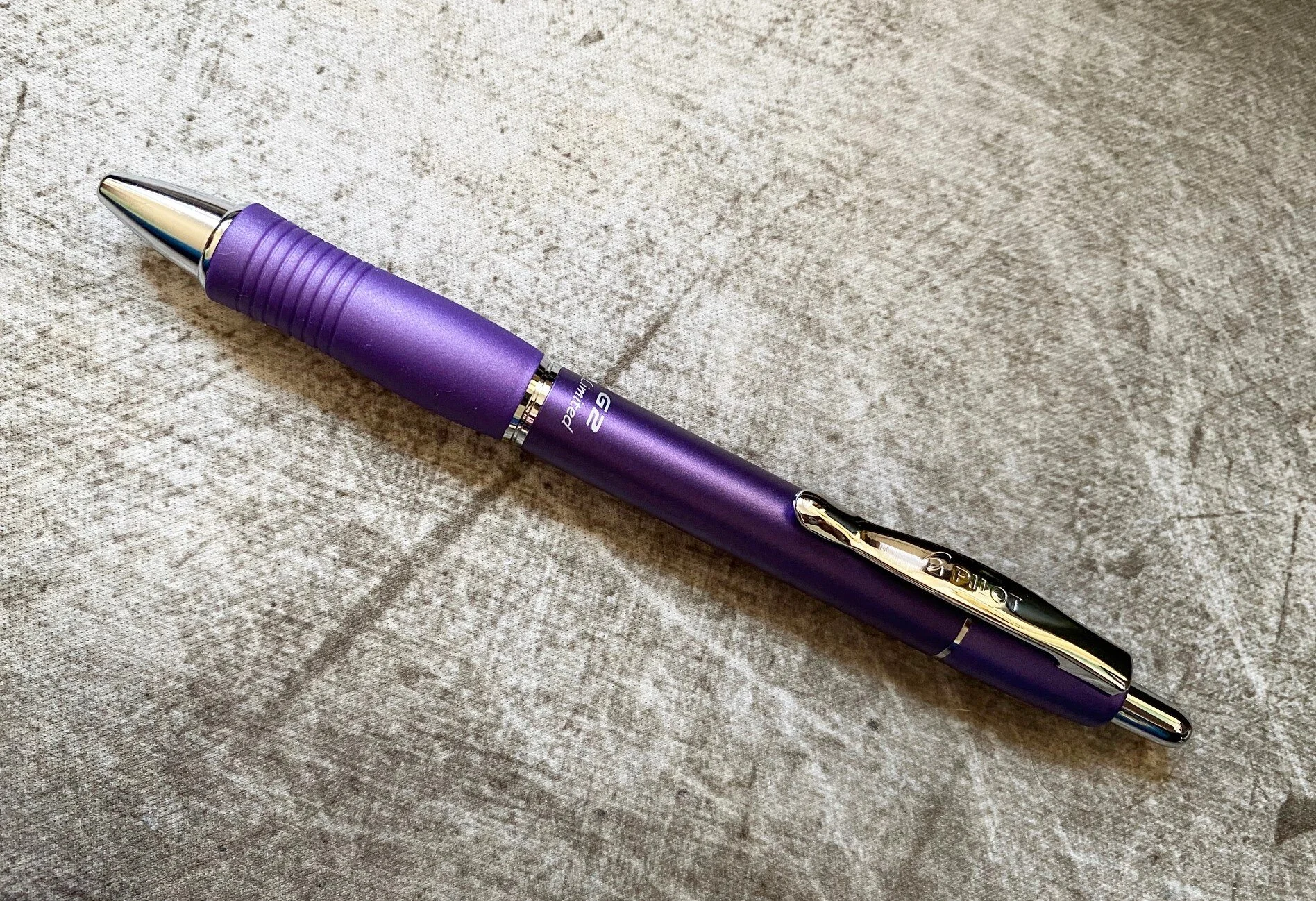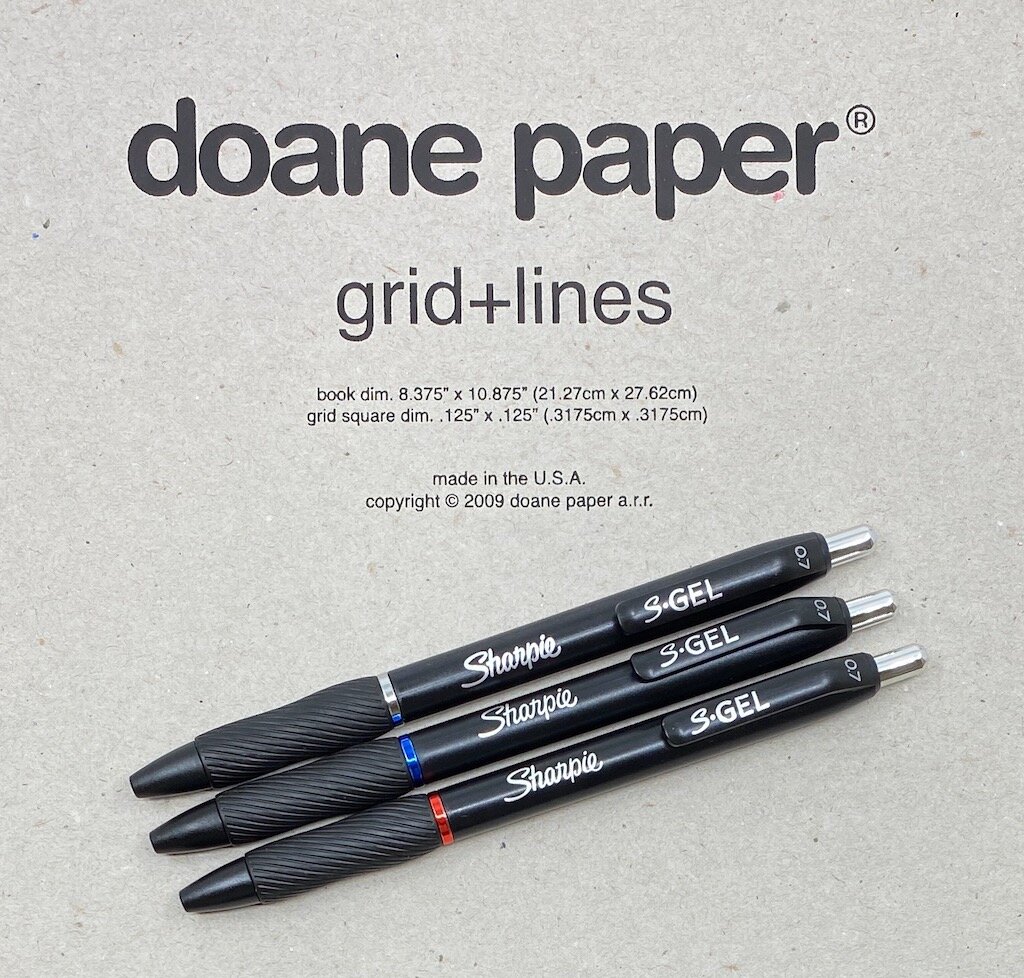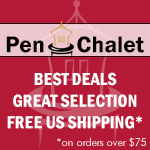(Sarah Read is an author, editor, yarn artist, and pen/paper/ink addict. You can find more about her at her website and on Twitter. And check out her latest book, Out of Water, now available where books are sold!)
The Pilot G2 doesn't exactly need an introduction. Most of the people I know who have pen preferences, though they may not yet be pen addicts, say it's one of their favorites. The reason for this, generally, is the refill. The G2 refill is great. It's smooth, reliable, saturated, and accessible. Nearly anyone who writes has encountered one and had a good experience. I've often bought the refills to put in other pen bodies, so I was excited to try this Limited Metallic Pen Body that Pilot designed just for the G2 line.
This pen has a lightweight metal body with a matte finish and chrome accents. The grip is firm rubber with added texture to prevent slipping. The nosecone unscrews to replace the refill. The spring is fixed inside the nosecone, so it doesn't go flying and get lost--a feature I appreciate greatly. It has a strong, satisfying click mechanism and the clip is firm but flexible enough to function well. This pen body is overall a bit bigger and longer than the standard plastic G2 body, but it's light enough that it's still comfortable to hold and write with.
It comes with a black refill inside that is acid free, archival, and waterproof. It does smear a little when still wet, but dries fairly quickly and is then permanent.
I'm a magpie, so I went for the purple body, but it is also available in grey, blue, red, gold, and silver—so they have the whole spectrum from fun to professional covered, though I'm hoping for more fun colors in the future. G2 ink refills also come in a variety of fun colors, but you're not limited to G2 refills with this pen body, either. It also fits popular refills like the Pentel EnerGel and Uni Jetstream, among others.
I think this pen is very well priced at $11.75. Maybe even a little underpriced. It's perfect for an everyday purse pen, and sturdy enough to survive in a pocket or backpack. Ideal for students or use in the office--though you'd have to guard it against wandering pen syndrome. It's a nice pen, but it doesn't look so fancy that it might not be mistaken for a communal or disposable pen to someone who doesn't understand that some pens are special.
(JetPens provided this product at no charge to The Pen Addict for review purposes.)
Enjoy reading The Pen Addict? Then consider becoming a member to receive additional weekly content, giveaways, and discounts in The Pen Addict shop. Plus, you support me and the site directly, for which I am very grateful.
Membership starts at just $5/month, with a discounted annual option available. To find out more about membership click here and join us!






















